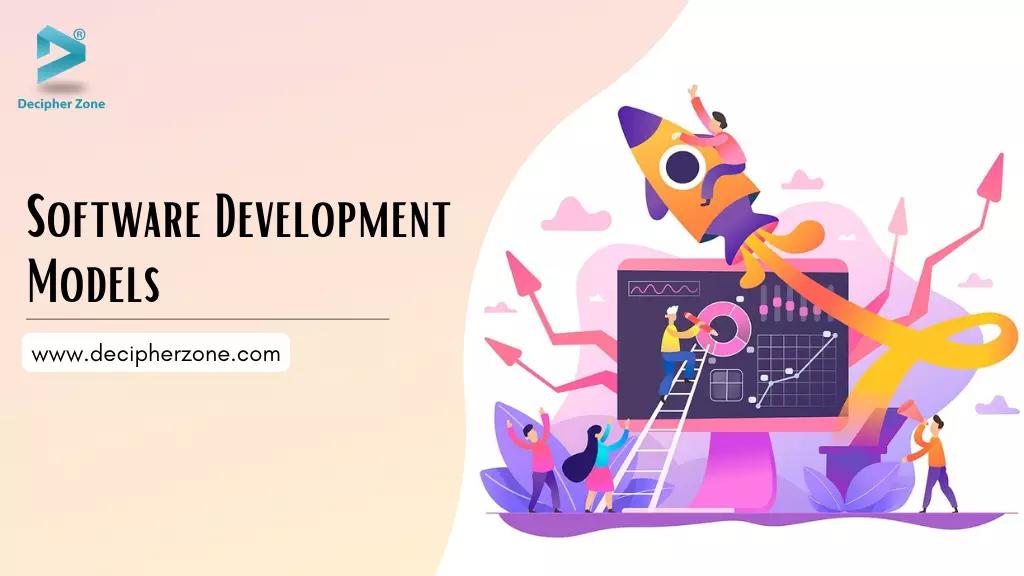9 Top Best Software Development Models. Technology has simplified everything, and the integration of technology into every business sector has brought innumerable growth opportunities with the advent of software development. It is a complex and iterative process that requires thorough research and analysis alongside a strategic plan to work accordingly and develop the best solutions for a business.
When talking about software development, there are innumerable development models, that make the process feasible and efficient alongside ensuring quality, speed, and innovation while developing the software solution for your business.
Read more: Understanding Software Development Lifecycle (SDLC)
9 Best Software Development Models
In this blog, we will fill you up with some key software development models, alongside their advantages and disadvantages.
So, without any further ado, let’s get started!
Top 9 Software Development Models
The top 9 best software development models are as follows -
-
Extreme Programming (XP) Model
-
Iterative Model
-
Kanban Model
-
Lean Model
-
Prototyping Model
-
Scrum Model
-
Spiral Model
-
V Model
-
Waterfall Model
Read more: Most Popular Types of Software Development
Now that you know the key software development models, let us also discuss each of them in detail along with their pros and cons to help you decide better, and choose the best according to your business requirements.
1. Extreme Programming (XP) Software Development Model
It is one of the methods of the agile software development models that allow the developers to make changes even after the iteration has started, and its phases include planning, coding, testing, and launch.
It enables the developers to manage projects with efficiency and flexibility, thus emphasizing teamwork alongside continuous feedback, collaboration, and adoption to ensure the high quality of the software.
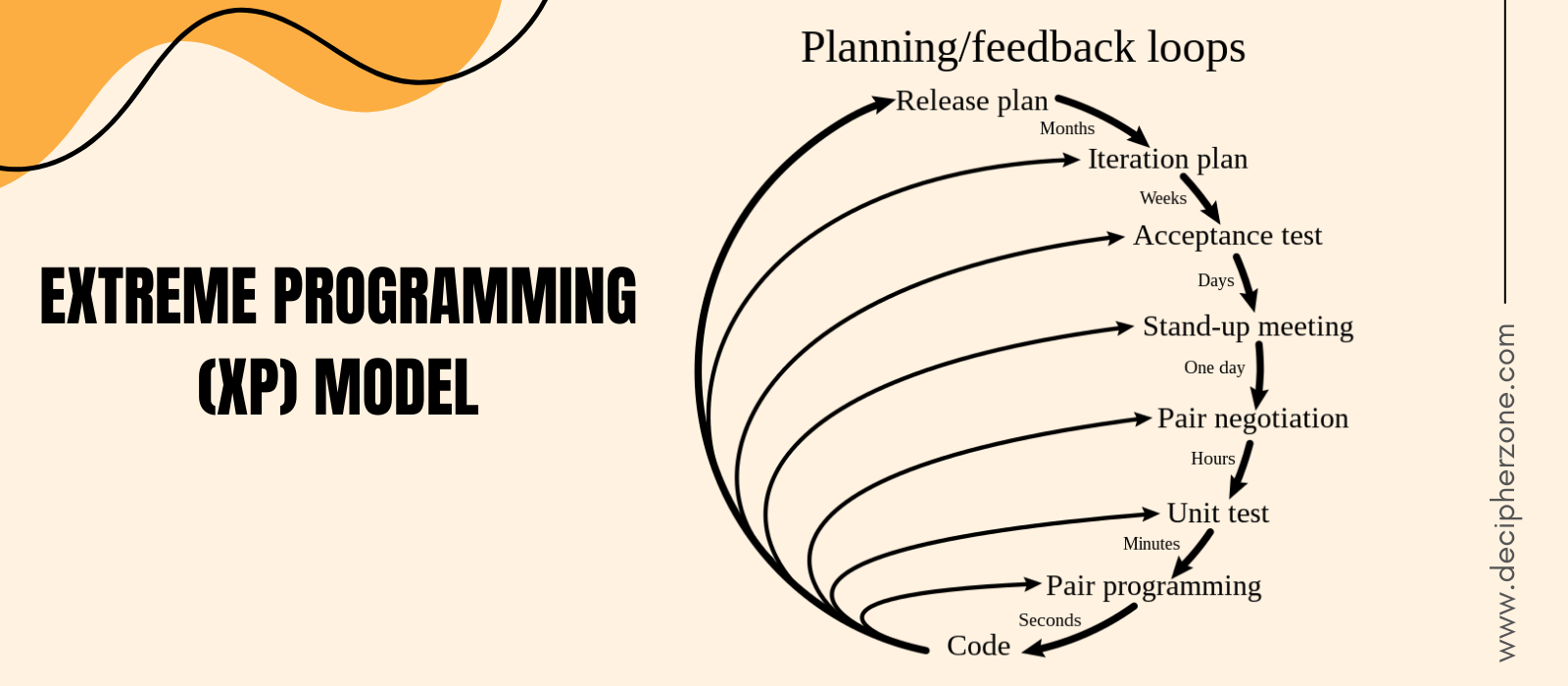
Read more: Software Design Process and Tools
It is suitable for developing small projects, web development, projects with rapidly changing requirements, collaborative projects, and many more.
The pros of the extreme programming Software Development model are -
-
It emphasizes communication and collaboration between the client and team members
-
Ensures quality and enhanced customer satisfaction
-
Pair programming, test-driven development, collective ownership
The cons of the extreme programming Software Development model are -
-
It requires a high level of customer involvement
-
It is not suitable for large-scale projects
-
Relatively high costs.
Read more: How to Choose a Software Development Company
2. Iterative Software Development Model
It is a software development technique that starts with planning and continues through iterative development cycles until the entire system is implemented with ongoing user feedback, and its phases include initiation, elaboration, build, and transition.
In addition, you do not require full specifications, instead in each iteration a particular aspect of the software is developed and tested, which results in better management alongside business-focused development.
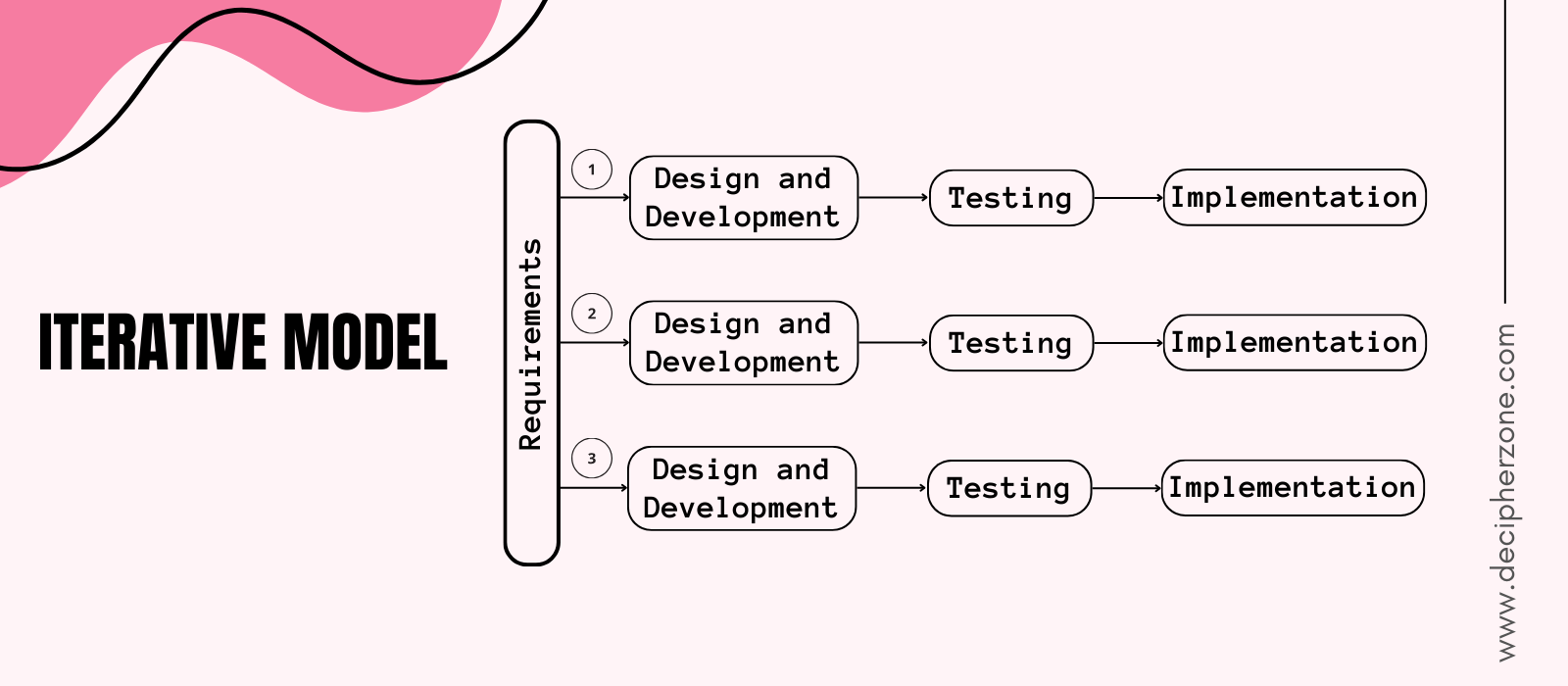
Read more: What is Custom Software Development?
It is used to develop mid to large-scale or long-term projects that have a huge user base and where user feedback and satisfaction are important.
The pros of the iterative Software Development model are as follows -
-
You can easily make a user-centric product by implementing customer feedback
-
Helps in developing custom software solutions alongside early delivery
-
It enables continuous changes and improvements throughout the development process
-
It involves testing at every phase of development which makes it easier to identify and fix the bugs.
Read more: 10 Types of Bugs in Software Testing
The cons of the iterative Software Development model are -
-
It is not as flexible as compared to the agile method of development.
-
Making huge changes and modifications to the software can be time-consuming as well as costly.
Read more: How to Develop a Software from Scratch?
3. Kanban Software Development Model
It is one of the well-known DevOps and Agile software development models that helps in developing projects with continuous workflow alongside real-time communication and transparency in work. It is a flexible approach that changes according to the changing needs of the development team.
The phases of the Kanban model include identifying the processes, visualization of the processes, identification of the issues and bottlenecks, work in progress, testing, and improvements.
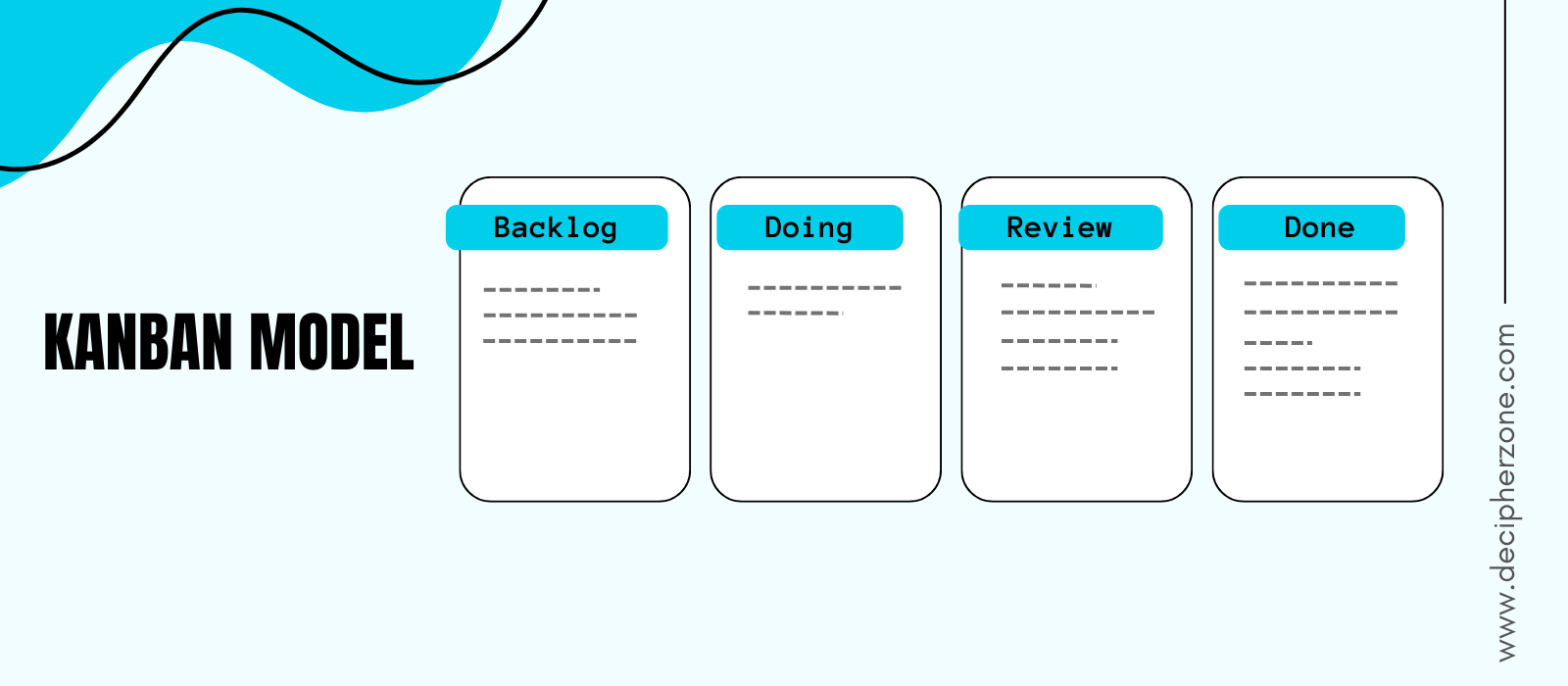
The pros of the Kanban Software Development model are -
-
It enables you to view and monitor the progress of work in real-time
-
It adapts to the changes quickly and ensures a seamless development process
The cons of the Kanban Software Development model are as follows -
-
It requires clear prioritization of the tasks and works based on the nature and type
-
It is a time-consuming process as it is research-oriented.
Read more: Tips to Choose a Custom Web App Development Company
4. Lean Software Development Model
It is a popular agile software development model that is inspired by lean manufacturing principles and is good for projects that have limited time and budget.
It was developed by the Toyota Corporation in Japan and primarily focuses on maximizing value alongside minimizing waste in the software development process. Its phases include the elimination of waste, creating knowledge, high build quality, fast delivery, team empowerment, optimizing processes, and many more.
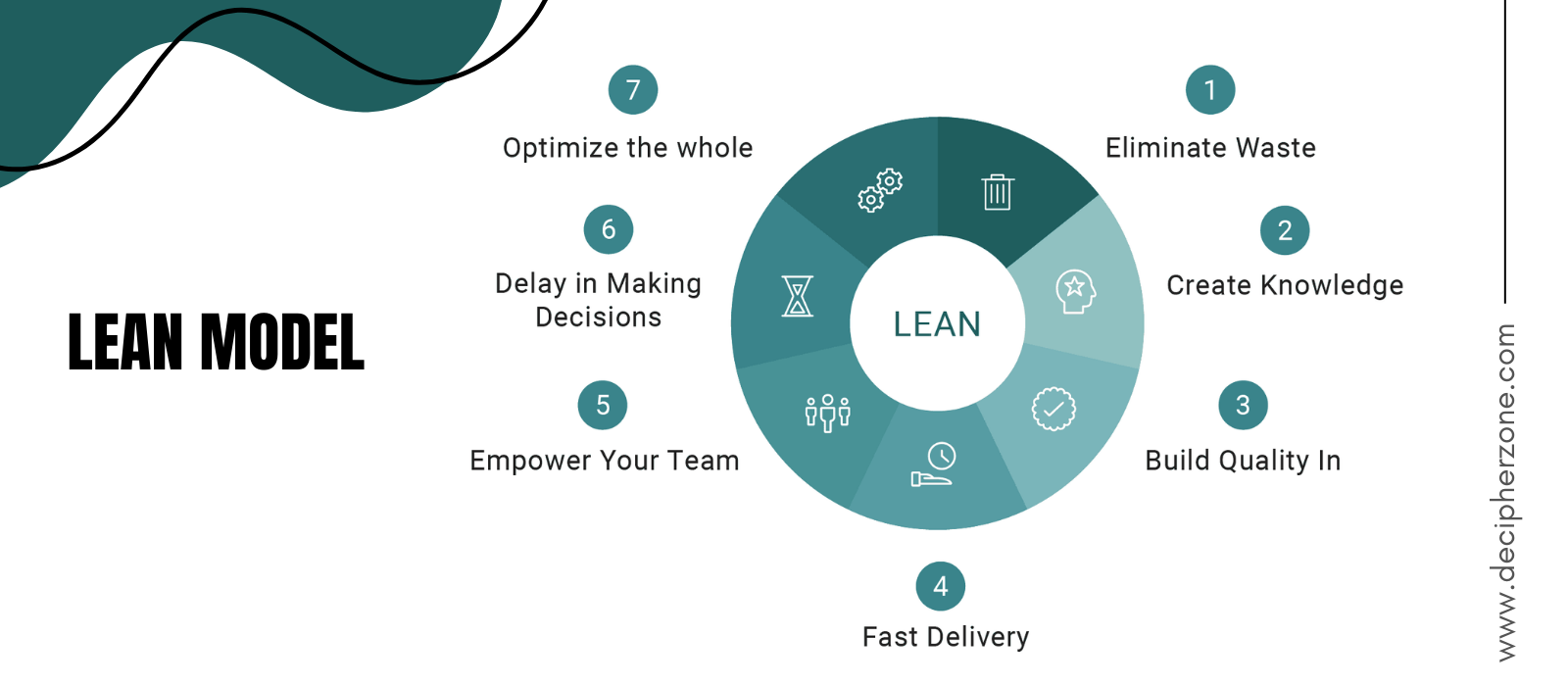
Read more: Comparison of Project Management Methodologies
The pros of the lean Software Development model include the following -
-
It ensures a streamlined development approach alongside maximizing value
-
Highly focuses on customers with continuous improvement
-
It helps in saving time, effort, and money by removing unnecessary processes.
The cons of the lean Software Development model are -
-
It lacks documentation and predictability
-
It is dependent on customer involvement as well as team involvement which might lead to a conflict.
5. Prototyping Software Development Model
This model is a hybrid of the waterfall model and is exactly what the name suggests which implies developing a small-scale prototype of the project and improving it accordingly as per the user feedback.
Its phases include requirement analysis, design, prototype formation, initial evaluation, refining prototype, and production, and is highly used when you do not know the exact project requirements beforehand.
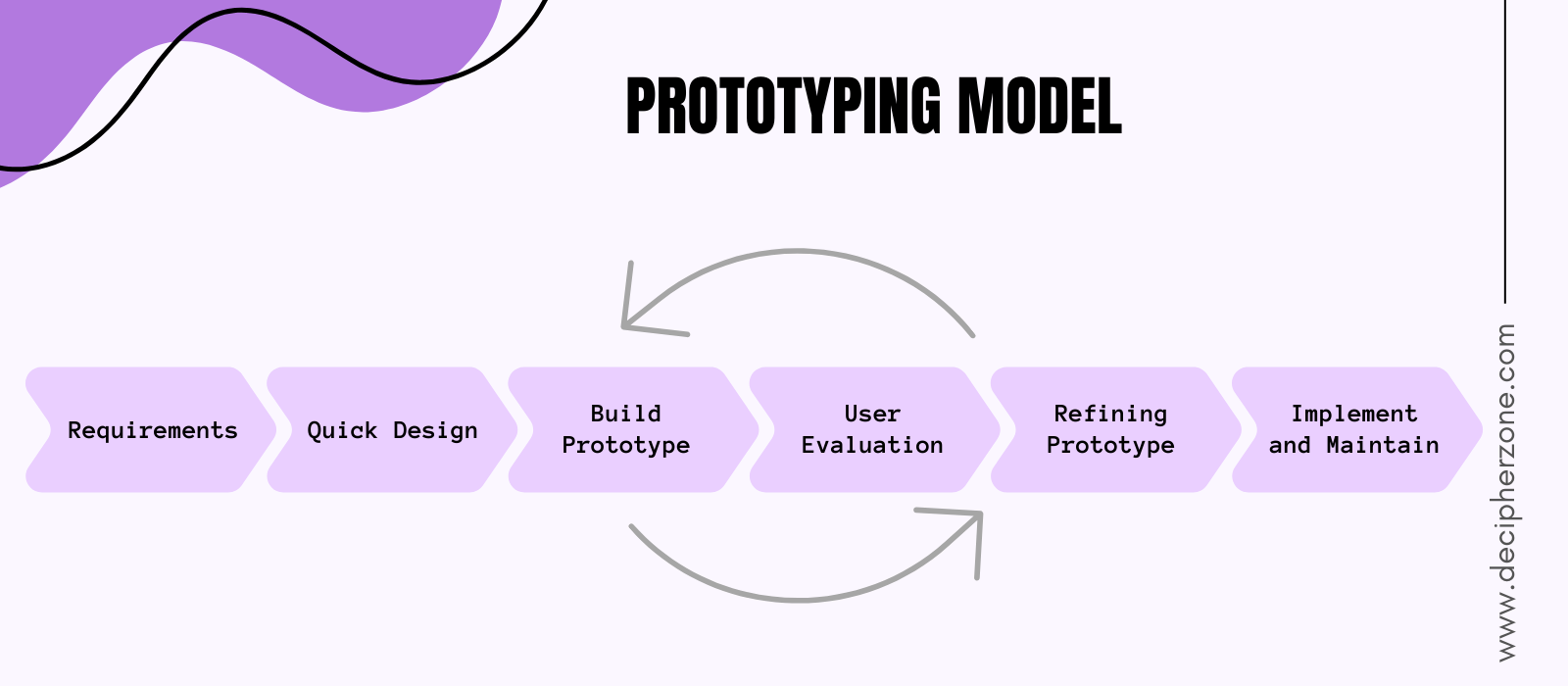
Read more: Software Development Challenges and Solutions
The pros of the prototyping Software Development model are -
-
It enables customer involvement and early feedback which helps in improving the quality of software
-
Reduces several risks related to the project like miscommunication
-
It also provides flexibility in design, accommodates new requirements easily, and also helps in early error detection.
The cons of the prototyping Software Development model are -
-
It can be a time-consuming process alongside being expensive
-
Poor documentation due to the changing business requirements
-
Might not be scalable enough to accommodate the future needs of a business.
Read more: MVP In Software Development: Benefits and Cost
6. Scrum Software Development Model
It is the most popular agile software development model that is widely preferred by the leading software development companies of the world and highly emphasizes flexibility, collaboration, and real-time progress tracking.
It divides the project into simple and manageable parts, which are time-bound and last up to 1 to 4 weeks. It is a simple and lightweight framework that is used to develop medium-scale projects with evolving requirements.
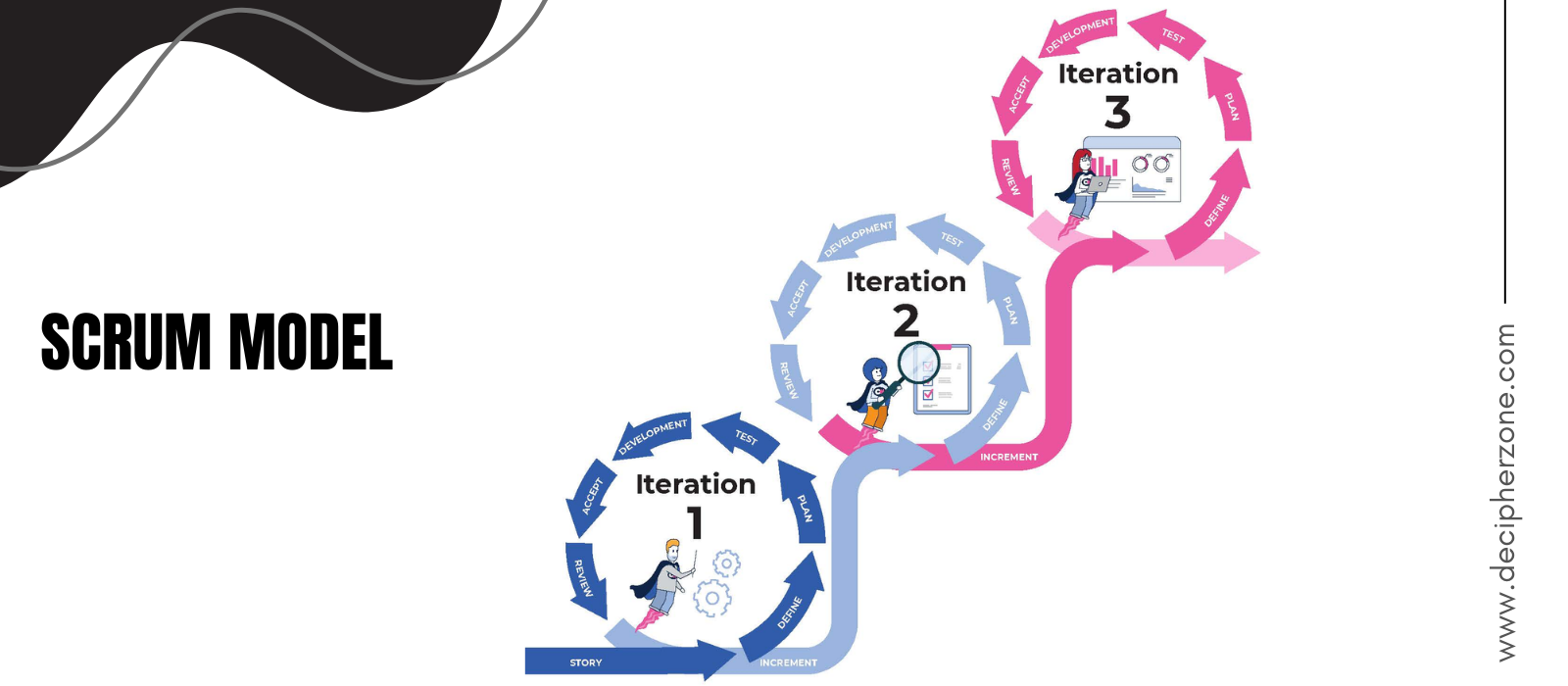
Read more: Managing A Distributed Team in Software Development
The pros of the scrum Software Development model are as follows -
-
It is a time and cost-efficient software development model.
-
It is adaptive and promotes teamwork and collaboration.
-
The scrum SDLC model relies on continuous feedback and improvement which results in developing high-quality software.
The cons of the scrum Software Development model include the following -
-
It requires a SCRUM master and daily scrum meetings.
-
It does not allow changes into the sprint after the activities have been defined.
Read more: 6 Stages of the Agile Development Lifecycle
7. Spiral Software Development Model
It is another famous software development model that is a combination of the iterative development model and some controlled aspects of the waterfall model.
The spiral model highly emphasizes risk analysis and has four phases i.e. identification; design; development; and evaluation and risk analysis. It is used to develop projects that have medium to high risks, projects that require long-term commitments due to the changing requirements, and many more.
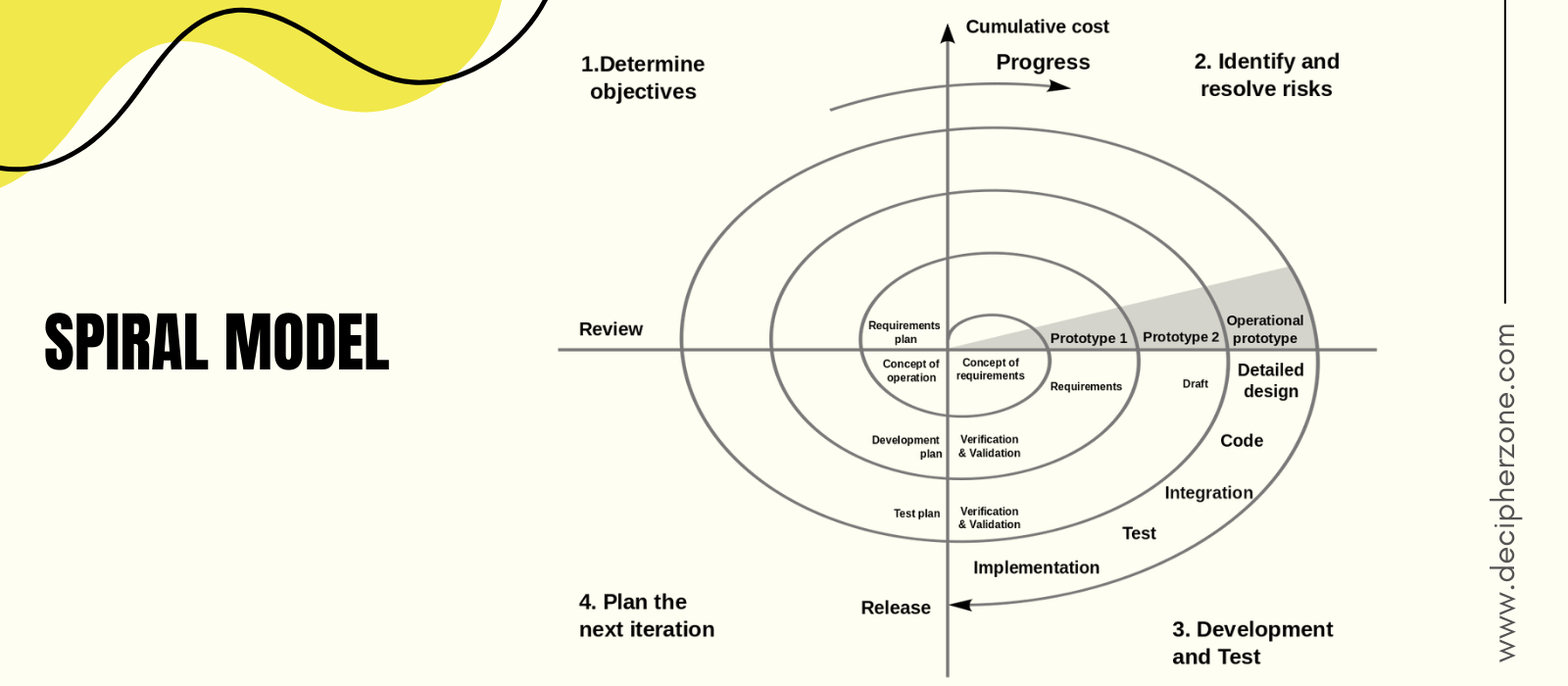
Read more: Enterprise Risk Management Software Development: Benefits & Features
The pros of the spiral Software Development model are -
-
It can easily accommodate the changing business requirements
-
It helps in breaking down the development process into smaller parts which later helps in risk management.
The cons of the spiral Software Development model are -
-
It is a complex and challenging process, is time-consuming, and also requires excessive documentation.
-
It requires experienced developers for risk analysis and management.
Read more: What are the Benefits of IT Outsourcing Services?
8. V Software Development Model
It is known as the verification and validation model is a linear methodology inspired by the waterfall model and is used for developing projects with strict and well-defined requirements. It is based on the integration of a testing phase for each of the software development stages, where the next phase can only start after completing the previous phase.
Its verification phases include requirements analysis, system design, architecture design, detailed design, and coding, while the validation phase includes different testing levels starting from acceptance testing, system testing, integration testing, unit testing, and coding.
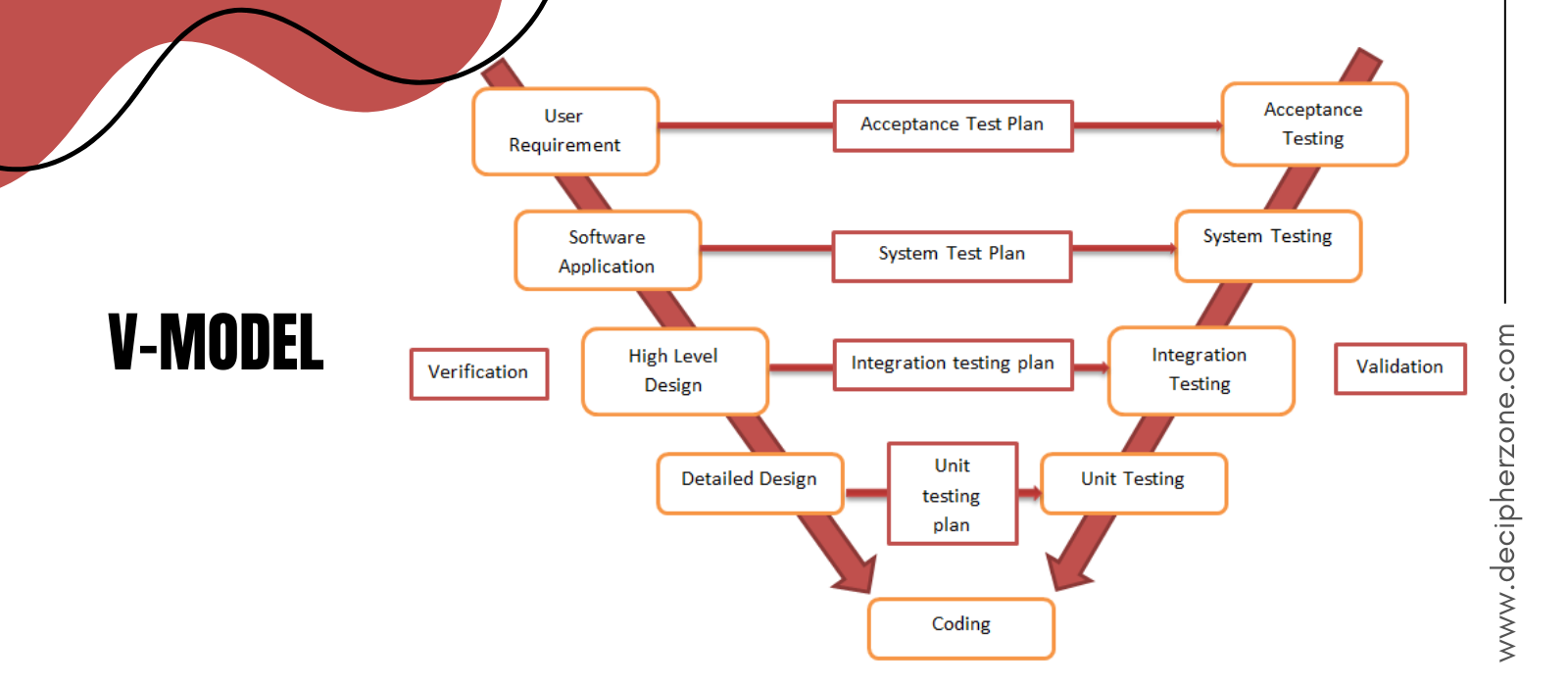
The pros of the V Software Development model are -
-
It is easily manageable as its phases have specific deliverables and a review process.
-
It helps in the early detection of issues and also helps in tracking the progress accurately.
The cons of the V Software Development model are as follows -
-
It involves high risk and is a time-consuming process
-
It is not suitable for object-oriented projects and does not support iteration of phases.
Read more: Proof of Concept in Software Development
9. Waterfall Software Development Model
It is among the oldest software development models that are simple yet idealistic and are used to develop projects that have well-defined and stable requirements with long timelines. Its phases include requirements gathering, analysis, design, coding, testing, and implementation, where you can move to the next phase only after the completion of the previous phase.
Here the outpost of the previous phase is the input of the next phase which is considered as a sequential flow in the waterfall model.
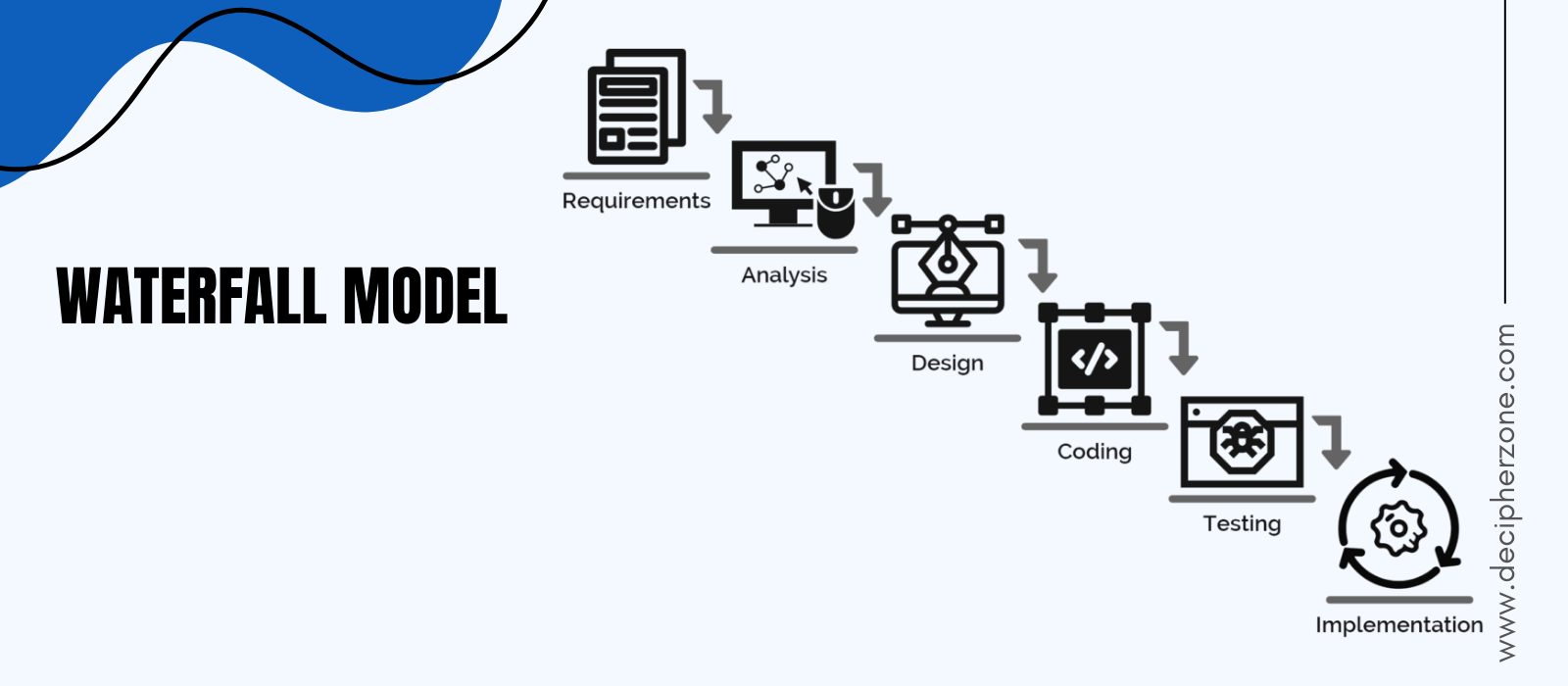
Read more: Agile Testing: Principle, Methods, Quadrants, and Advantages
The pros of the waterfall Software Development model include the following -
-
It is easy to understand, has extensive documentation, and has clearly defined phases.
-
It simplifies tracking the progress and helps in identifying potential errors during the initial phase of planning.
The cons of the waterfall Software Development model are -
-
It has limited flexibility and stakeholder involvement.
-
It is difficult to make changes once the requirements specifications phase has been completed which might lead to a high risk of late-stage flaws.
Read more: What is agile software development?
Wrapping It Up
Developing a software application for a business is a complex and challenging process and requires a lot of planning alongside making the process more manageable, effective, and efficient, and the advent of software development models has helped in doing so. And if you too are thinking about developing a software solution for your business, then, why wait?
Connect with us, or hire a developer, and we will help you tailor the best solution for your business that is feature-loaded, scalable, secure, and user-friendly at market-friendly rates alongwith on-time delivery.
FAQs about Software Development Models
What are the benefits of choosing a software development model?
The benefits of choosing a software development model are:
-
It provides a structural approach to software development
-
Offers clear direction and provides enhanced user experience
-
Ensures effective compliance and risk management
-
Optimizes resources efficiently, and many more.
Which is the best software development model to choose from?
There are various SDLC models to choose from when developing software for your business and each of them has its own set of pros and cons. But a few factors that can help you in determining the appropriate software development model are the project requirements; size and complexity of the project; customer involvement; compliance and risk management; etc.
How much time does it take to develop full-fledged software?
Developing full-fledged software can take up to 6 months to 1 year and sometimes even more based on several factors like the changing business requirements, complexity of the software, budget, and many more.

